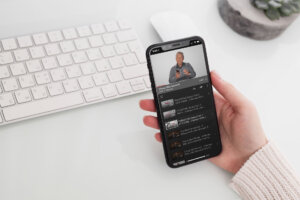If Generation Z Had a Perfect Working Environment

I met a young employee at Toyota who told me what he loved most about his workplace. Believe it or not, he wasn’t in a white-collar position. He worked on the assembly line, but he was satisfied, nonetheless. To be honest, I was surprised. He did not fit the typical profile of a twenty-something who wants to begin a career with a six-digit income and enjoy dictating the terms of their day-to-day tasks. He was doing hard work, even monotonous work. How could this graduate enjoy his job?
I was curious, so I asked him.
He replied, “I love this place.” When I smiled and replied how little I hear that comment from a young professional, he went on. “I had planned on staying at this job for a year or so, then moving on, thinking I would get bored or disinterested. But I found camaraderie and authority and mentors who were willing to both teach and listen—and I didn’t want to leave. Like I said, I love this place.”
He continued to describe what Toyota calls an “Andon Cord.” It’s a wire or cable that any team member can pull when they spot an error on the conveyor belt. Immediately, a supervisor approaches the teammate and asks about what they spotted. They explore the situation and determine what needs to happen. In short, they problem-solve together. Often, nothing needs changing, but if it does, the line stops and the correction is made, even if it’s by a rookie staff person. Toyota doesn’t see this as an expense, but as an investment. Problems are solved and people are served quickly, avoiding long-term, big-time problems.
This kind of authority and listening was magnetic to my new young friend.
Just Who is Generation Z?
In the U.S., there are approximately 59 million members of Generation Z, the population who’s grown up in the 21st century. The two mega-characteristics they bring with them are:
- A high sense of agency. They grew up with a smartphone and feel they know a lot.
- A high sense of anxiety. Having grown up with a smartphone, they’re overwhelmed and often suffer from mental health issues, like stress, anxiety, and depression.
They are unique from former generations, including the millennials before them, who are now in their late twenties all the way up to midlife. Below is a quick look at the data on Generation Z, pulled from multiple sources, including the Pew Research Center, Higher Ed Dive, the Barna Research Group, and the Gallup organization. Here’s what we know about Gen Z and work:
- They’re the most diverse population at work: 48% are not white.
- They own a smartphone (96%) and multitask on up to 5 screens a day.
- They’re smart consumers: 35% plan to save for retirement in their 20s.
- Salary is a high motivator (70%) and health insurance is a must (70%).
- Almost 6 in 10 say they would work weekends for higher pay.
- Unlike Millennials, only 38% consider work/life balance important.
- More than 90% prefer to have human interaction at work, not just screens.
- 40% want daily interactions with their boss and feel they’ve done something wrong if they don’t have them. 60% want multiple check-ins daily.
Having gathered information on these young adults from meeting with hundreds of them in focus groups, I offer you the ideal work situation they would love. You may not be able to create a work environment like this, much less want to, but if you can cultivate even some of these, you will become more attractive to a new generation of workers.
Generation Z’s Ideal Workplace
1. OPENNESS AND CONTACT.
As I mentioned above, young professionals prefer an open workplace where leaders are easily accessible. They like multiple contacts each day and prefer little to no hierarchy. Flow charts seem antiquated; if they had to choose a system, they prefer organic over organized.
Question: How could you improve in this area and make yourself more accessible?
2. FUN AND PLAY.
In some of my focus groups, Gen Zers described work as a “hobby.” This doesn’t mean they won’t take it seriously, but rather that they want work-life blending over work-life balance. They want to feel they’re having fun meeting goals and that they’re working with friends.
Question: How could you turn up the fun and inspire better work through a playful tone?
3. SPEED AND CHANGE.
The attention span for teens has dropped from 12 seconds in the year 2000 to about 8 seconds today. While they can and will binge Netflix shows, they prefer to engage with lots of quick changes and variety to what they’re working on from week to week.
Question: How could you introduce change and improvement at a faster pace?
4. FLUID AND ADAPTIVE.
Just like their sense of identity is fluid, embracing their sense of vocation may be fluid as well. Generation Z is more likely to adapt to changes in technology and their approach to a task than older generations are. It’s tough for many to sit still. Employers must leverage this.
Question: How could you implement micro-tasks and upgrade the variety of job projects?
5. MEANING AND MISSION.
While Generation Z values a good income (like other generations do), they want to feel like their job contributes to the world and makes it a better place. Gen Zers say they’ll take a job that benefits their community over one that doesn’t every day. They are cause-oriented.
Question: How can you connect the dots for staff between menial tasks and the mission?
6. GROWTH AND LEARNING.
This one is clearer than any other. They want to feel they are growing and learning each year on the job and will leave if they feel stagnant. Employers should offer ongoing personal and professional learning if they want to keep the best Gen Z members.
Question: How can you improve the growth and development opportunities on your team?
Almost from our beginning, our organization, Growing Leaders, has had four generations serving on the team. As a non-profit organization, our salaries were not the big draw for new hires. We didn’t offer all the perks that a for-profit business did, and we certainly didn’t have the workspace to allow every employee to have their own office space. Yet, for almost twenty years, we’ve had a line of people wanting to join our team, mostly young people. I began to realize the reason for this: What we lacked in cash, we made up for in culture. People came for the cause and the culture. We practice most of these six work descriptions above and it has been our saving grace. If you want to find and keep Gen Z, I recommend you do as well.
Generation Z is expected to make up more than ¼ of the workforce by next year. Is your organization ready to welcome them and leverage their strengths for your success?
The way you attract, retain, empower, and utilize Gen Zers in your workplace will be different than any generation before. It will require a shift. But here’s the good news: I’ve written a free 50-page eBook equipping you with all the tools you need to start preparing. Click here to download your copy of The Glass is Still Half Full: The Amazing Opportunity You Have to Welcome and Leverage Generation Z into Your Workplace.
More Articles

3 Strategies for Less Stress and More Meaning This Holiday Season

6 Ways Great Leaders Can Cultivate Gratitude








